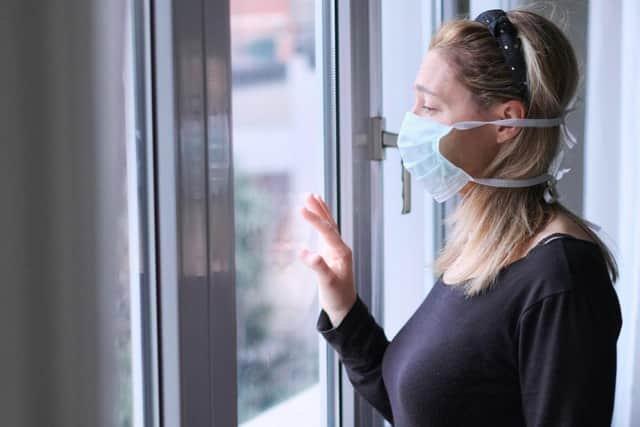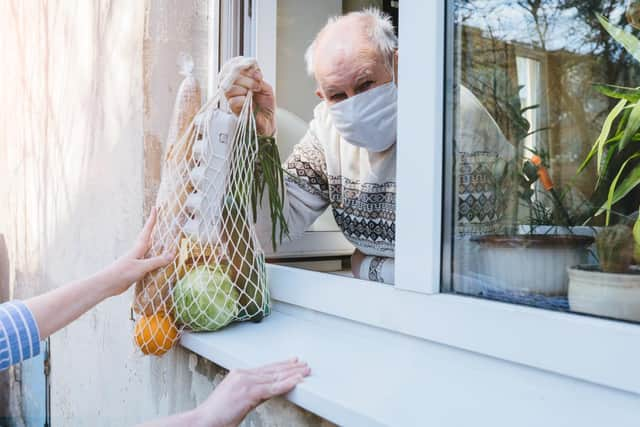When does shielding end in UK? Date clinically vulnerable can stop shielding - and latest government advice
and live on Freeview channel 276
Around four million people in England and Wales will no longer be asked to shield at home to protect themselves from Covid-19 as of Thursday (1 April).
Letters have been sent out to notify people over the last few weeks, with the change coming amid falling coronavirus cases and hospital admissions.
Advertisement
Hide AdAdvertisement
Hide AdBut what do the changes mean for those affected? Here’s what you need to know.


Who no longer has to shield?
As of 1 April, people in England and Wales who are considered clinically extremely vulnerable to Covid-19 will no longer be asked to shield to protect themselves.
A list of 2.2 million clinically extremely vulnerable people were initially advised to stay at home to avoid the risk of infection, with a further 1.7 million added to the list in February.
The first list included people with single risk factors, such as various types of cancers, people on immunosuppressant drugs, or those with severe respiratory conditions.


Advertisement
Hide AdAdvertisement
Hide AdHowever, as the pandemic has continued, health experts found that some people are at higher risk than others because they have multiple risk factors.
This prompted a further 1.7 million people to be asked to shield, based on the clinical judgement of their GP or hospital doctor.
There are a total of 3.8 million people in England who are currently shielding, according to NHS Digital, while in Wales there are 130,000.
Those who were advised to shield have been entitled to priority access to a Covid-19 vaccination ahead of the general population.
Advertisement
Hide AdAdvertisement
Hide AdMore than 30 million people in the UK have now received their first dose of a coronavirus vaccine, while more than three million have had both doses.
The change in guidance will mean that anyone who is on the shielded patients list will no longer be eligible to receive statutory sick pay (SSP) or employment and support allowance (ESA) on the grounds of being advised to shield.
What rules should shielders follow?
Under current guidance, shielders have been advised to avoid shops and busy areas, work from home, and avoid all contact with people who are not members of their household or support bubble.
These rules will be relaxed in England and Wales from Thursday (1 April), in response to the falling Covid-19 infection rates and vaccination targets being met, although measures will still be in place to ensure transmission is kept under control.
Advertisement
Hide AdAdvertisement
Hide AdFrom 1 April, shielders will follow the guidance for the general population in England and Wales, but are still being advised to keep their social contacts at low levels, maintain “strict social distancing”, and work from home where possible.
Deputy Chief Medical Officer for England Dr Jenny Harries said: "Shielding has always been an advisory measure to safeguard those who are the most clinically vulnerable in our communities.
"We recognise how difficult this period has been for so many and the impact it has had on people’s wellbeing.
“With the prevalence of the virus in the community continuing to decrease, now is the right time for people to start thinking about easing up on these more rigid guidelines.
Advertisement
Hide AdAdvertisement
Hide Ad“If you have been shielding, we strongly urge you to take extra precautions following April 1 to keep yourself as safe as possible, such as continuing to observe social distancing and working from home.
“We will continue to monitor all of the evidence and adjust this advice should there be any changes in infection rates.”
When will shielding end in Scotland and Northern Ireland?
Shielding in Scotland is due to end on 26 April, with all of mainland Scotland due to move from Level 4 to “modified” Level 3 restrictions on this date.
Adults who have been shielding will be advised that they can return to work from this point, children on the shielding list will be allowed to return to nursery or school, and students can return to college or university.
Meanwhile, plans for ending shielding in Northern Ireland have not yet been finalised.